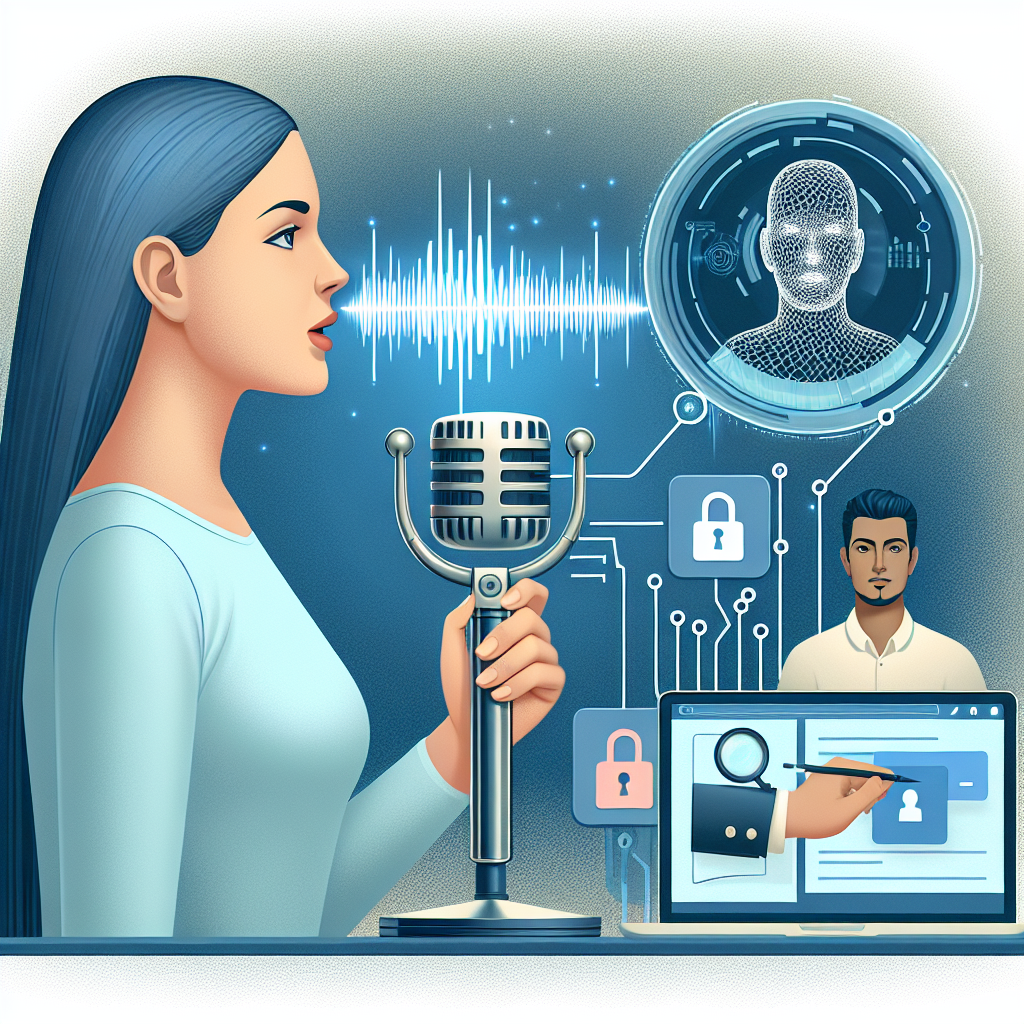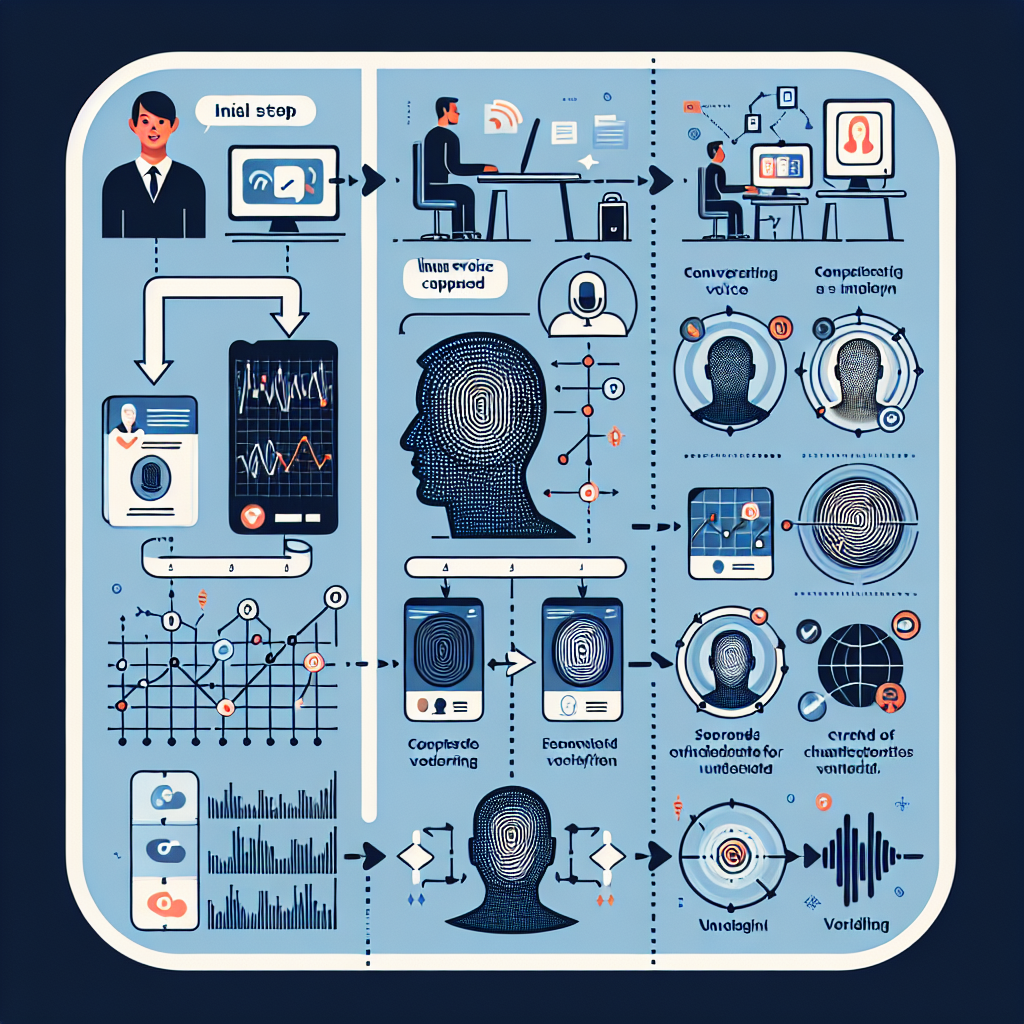
In the age of digital commerce and banking, ensuring the security of transactions has become increasingly critical. One promising technology aimed at bolstering this security is voice-based customer verification. This technology utilizes the unique features of an individual's voice to establish their identity, akin to how a fingerprint or retina scan might be used in more traditional biometric systems. With fast technological advancements, it is quickly becoming an integral part of secure transaction systems.
At its core, voice verification employs advanced machine learning algorithms, specifically a branch of artificial intelligence known as voice biometrics. These algorithms are designed to process and analyze the numerous unique characteristics of an individual's voice including pitch, tone, and rhythm. Once these details are stored, they can be used to compare and verify the identity of a user in future interactions.

Voice-based verification presents several benefits; for instance, it provides seamless customer interaction as users do not need to remember complex passwords or PINs. Moreover, as each person's voice is unique, the system becomes hard to manipulate or bypass, which strengthens security measures. Additionally, it also takes into account the fact that our voice changes over time and uses adaptive learning to adjust to these changes.
As transactions move to digital platforms, voice-based verification appears to be a potent solution to the security challenges of this new frontier. Its adoption could herald a new era of secure, frictionless transactions, and usher in breakthroughs in fraud prevention and customer ease of use.
While the technology is still evolving, it holds great promise for the future of transaction security. From commercial transactions to banking operations, voice-based customer verification is poised to reshape how we authenticate ourselves in the digital world.
Voice-based customer verification is an AI-driven solution that facilitates secure transactions by using an individual's unique voice pattern as an authentication tool. This technological ally seamlessly couples convenience with security by replacing traditional password-based systems with your voice, often described as one's audible fingerprint.
The mechanism of voice authentication begins with voice sample collection, where the user is required to provide a vocal sample. This is often done during the initial setup process or the enrolment phase where users are asked to read out specific phrases or sentences aloud. This data is then converted to a numerical representation, which essentially forms the voice print. A recent technological breakthrough ensures this data is now made anonymous and stored securely to address any potential privacy concerns.
Post that, the voice pattern analysis comes into play whenever a transaction is initiated. A fresh voice sample is captured, analyzed, and compared with the stored voice print. This method, termed speaker verification, utilizes various AI algorithms and statistical techniques. The modern AI algorithms employ a combination of vector error rates (SRE), Gaussian mixture models (GMM), and hidden Markov models (HMM), all working in tandem to give accurate results.
The voice verification systems learn and improve over time, adapting to any changes in a user’s voice, thanks to the machine learning capabilities. Machine Learning augments the accuracy by learning the nuances of a particular voice, including aspects like speed, pitch, accent and emphasis, thereby reducing the likelihood of fraudulent activities.
From the initial voice sample collection to the final AI-based processing, each step of the voice-based customer verification process ensures a unique blend of security, efficiency, and convenience. This transformative technology is fast becoming a go-to standard for businesses worldwide, prioritizing accurate and secure transactions.
In an era where cyber threats are on the rise, businesses must prioritize secure transactions for their customers. Various verification protocols have been introduced to fulfill this need, yet one solution surpasses the rest in terms of functionality and security - Voice-Based Customer Verification.

Utilizing advanced artificial intelligence technology, voice-based authentication has several considerable benefits. In terms of security, this method recognizes a customer’s unique voice pattern, thus making it extremely difficult to replicate or fake. It performs significantly better than the easily hackable passwords and PINs of traditional systems. A comparative study supports how it decreases instances of fraud or security breaches.
Another prominent advantage is the convenience for the end user. Customers no longer need to remember complex passwords or be privy to confidential PINs. A simple voice command now delivers a seamless and hassle-free authentication experience.
On a wider scale, voice-based authentication results in a reduction in operational costs for businesses. With these systems being automated, the requirement for manpower to handle customer authentication reduces dramatically. This translates not just into tangible cost savings, but also reallocation of company resources towards more crucial areas.
Implementing voice-based customer verification is not merely a step towards adopting emerging technology – it's a move to join the ranks of businesses prioritizing customers’ security and convenience. Platforms offering advanced voice authentication AI services are readily available, waiting to pave the way towards your venture’s prosperous future.
In recent years, many industries have embraced the sophisticated technology of voice-based customer verification. From banking to customer care service, companies are increasingly tracking the success stories of implementing this AI solution for secure transactions.
An excellent case study focuses on the banking sector, specifically, the prodigious headway made by Barclays. Their use of voice authentication technology left an indelible mark in the banking industry. As a result of implementing this technology, they reported a significant decrease in fraud cases and an expedited transaction process, as customers were no longer required to remember traditionally cumbersome passwords. This also improved customer satisfaction since their identities were verified swiftly, promoting a better banking experience.
Another success story comes from Northern Trust, a prominent banking institution that embraced voice biometrics for its client servicing. The organization rang the advent of an AI-based voice authentication mechanism that improved their operational efficiency and security, offering a user-friendly method of customer authentication.
Capitalizing on the same technology, Atom Bank - a leading digital-only bank, united with voice biometric provider Nuance, inaugurated its Voice ID. Atom Bank became well-known for its innovative and user-friendly banking experience and was commended for its judicious move to safeguard customer data.
The customer service sector is yet another area witnessing the transformative potential of voice verification technology. TalkTalk, a renowned telecom company, integrated voice authentication with their customer service in collaboration with Nuance. The revolutionary step was met with triumph, reducing the average call time, and consequently, decreasing operational costs.
Finally, it is evident from these cases that voice-based verification presents a secure, effective and customer-friendly solution that sectors dealing with a large customer base can adopt. Whether it's the speed of authentication or the robust security, the myriad benefits of voice verification play an indubitable role in protecting and enhancing customer experience.As businesses embrace modern technology, the use of voice-based customer verification driven by artificial intelligence is rapidly increasing. AI solutions offer secure transactions, yet they are not without potential challenges and limitations. Three key issues dominate these concerns: privacy considerations, the necessity of high-quality data, and voice spoofing vulnerabilities.

The first hurdle is privacy considerations. While many customers appreciate the convenience of voice-based systems, there's a legitimate worry about how their voice data is stored, used, and protected. If not properly secured, this data can become a target for cyber criminals. Legal compliance with data protection regulations, such as the GDPR, must also be strictly observed.
Second, achieving robust verification results highly depends on the quality of voice data. The data used must be both vast and varied to account for changes in an individual's speech due to factors like fatigue, emotions, or background noises. Gathering and managing such a high-quality database isn't a simple task. Challenges include the hurdles of obtaining user consent, managing large volume data storage, and ensuring the diversity and accuracy of voice samples.
The third, and perhaps most complex challenge is voice spoofing. Although AI-powered systems are becoming increasingly sophisticated, they aren't immune to counterfeit attacks. Fraudsters may use sophisticated voice synthesis or replay attacks to fool the system. Thus, the technology must continually evolve to detect and prevent such threats.
In conclusion, while AI-powered voice-based verification systems hold significant promise for secure transactions, it's critical for businesses to consider these challenging aspects. By doing so, they can better ensure a smooth and secure customer experience.
The advent of voice-based customer verification revolutionizes the approach to securing transactions and authenticating identities. Powered by advanced artificial intelligence (AI), voice verification adds a seismic layer of security by verifying individuals based on their unique voice biometrics.
As we navigate the future, ongoing research initiatives are focussed on escalating the sophistication, precision, and reach of voice verification technology. This includes not only ensuring immaculate accuracy in voice recognition, but also emphasizing on voice-based emotion detection. This novel feature could detect stressors or discrepancies in a person's tone, further strengthening the verification powerhouse that is voice-based customer verification.
Emotion detection in voice verification operates on intricate AI algorithms that analyze the cadence, tone, emphasis, and other subtle vocal cues. Amplifying security measures, this technology could detect when an individual sounds tense or anxious, potentially signaling a fraudulent transaction.
Another potential advancement is the integration of multi-factor authentication. Envision a scenario where voice verification is used in tandem with other biometric verification methods like iris or fingerprint scanning. This would create an unbreachable fort of security measures, further minimizing chances of unauthorized access. Multi-factor authentication is already a sought-after standard in data security and its amalgamation with voice-based customer verification could redefine the landscape of secure transactions.
The immense strides in AI further empower the potential of voice-based verification. Advanced machine learning models can continually learn from accumulated data. Consequently, they become progressively adept at distinguishing nuances in an individual's voiceprint. This continual learning and adaptability make voice-based customer verification progressively efficient over time.
These promising advancements and continual research initiatives hold the potential to revolutionize voice-based customer verification's paradigm. AI-driven voice verification is anticipated to lead the charge in providing secure, efficient transactions while offering a seamless user experience.
Start your free trial for My AI Front Desk today, it takes minutes to setup!








